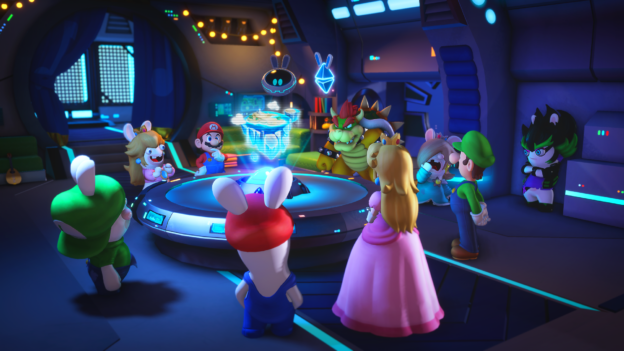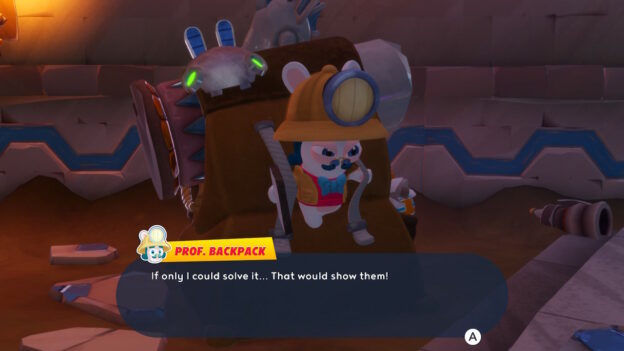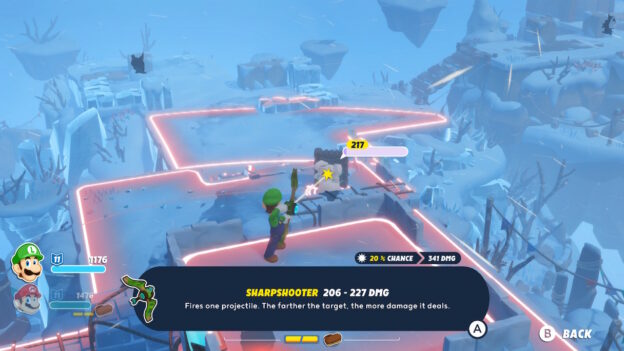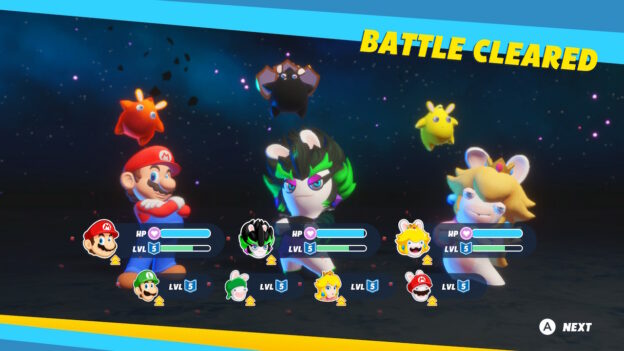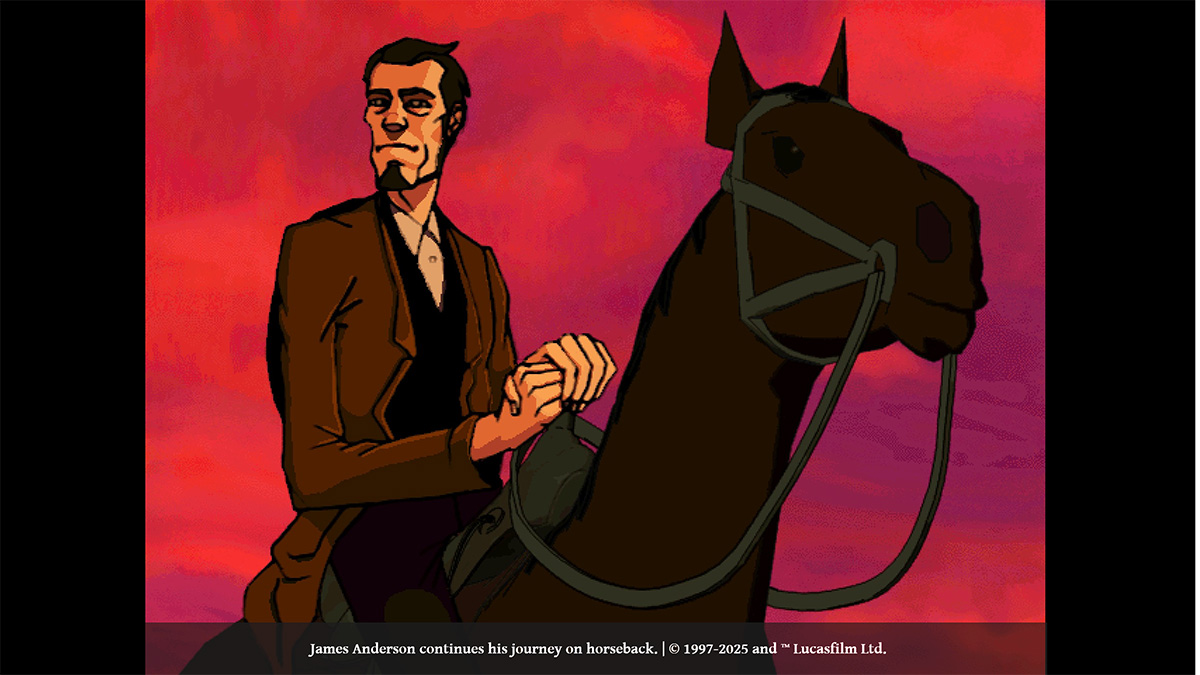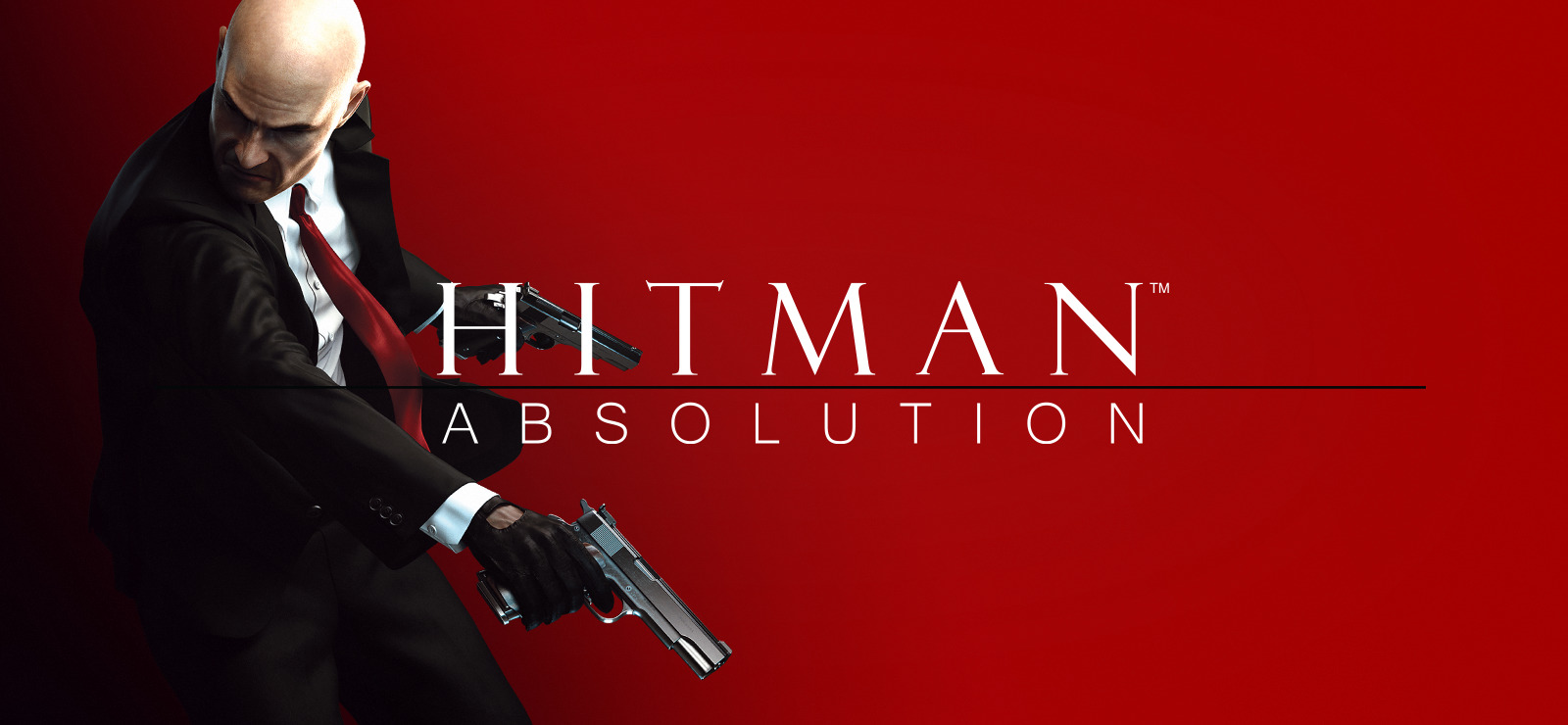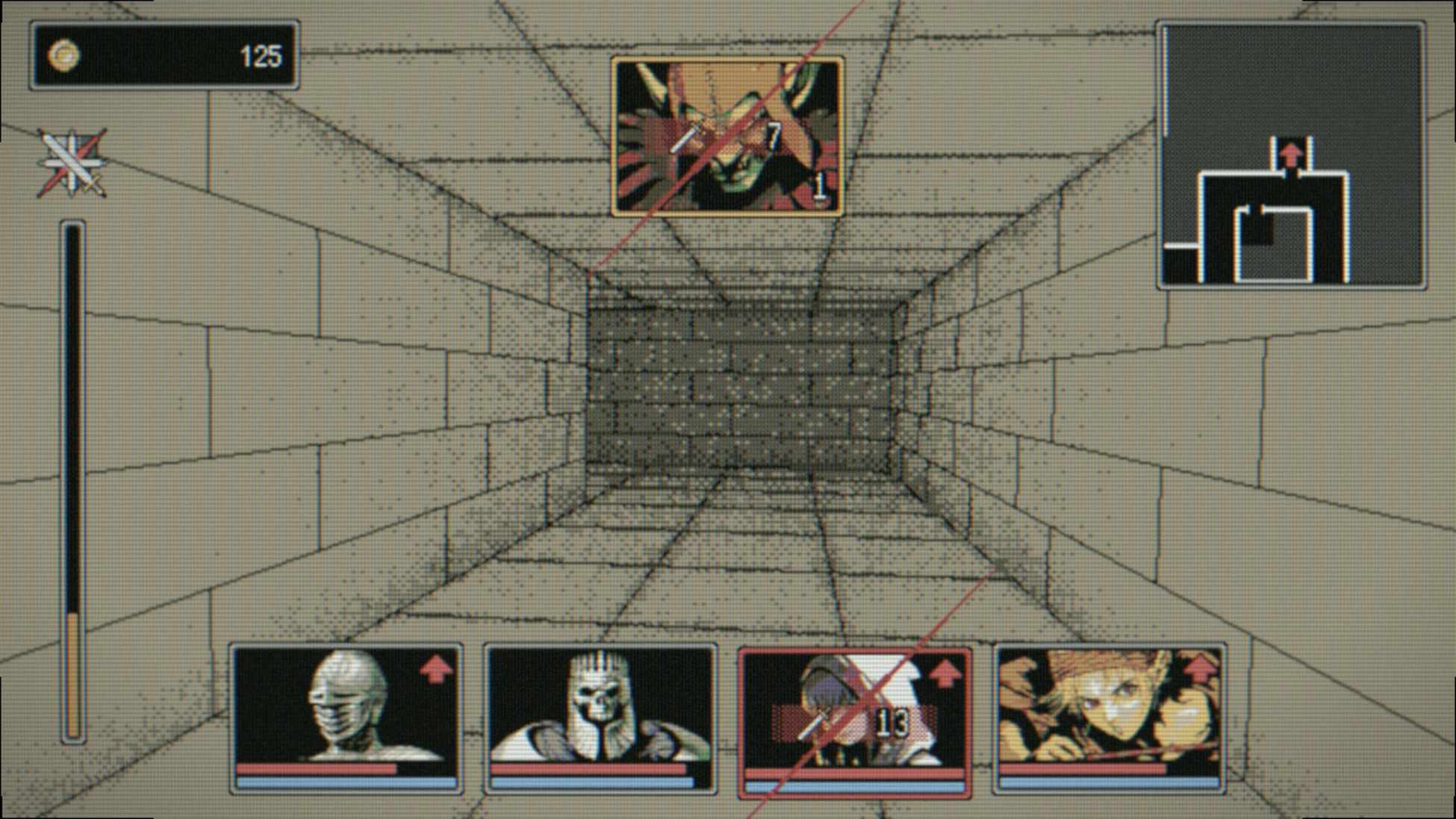Admittedly, I was skeptical when Mario + Rabbids: Kingdom Battle was released. I didn’t think the crude humor of the Rabbids would pair well with the clean-cut image of Mario. So I went into the game with low expectations. However, I was pleasantly surprised. Not only did I enjoy Kingdom Battle, but it quickly became one of my favorite games and my favorite tactical game.
So when Ubisoft announced Mario + Rabbids: Sparks of Hope, I was equally as doubtful, but for different reasons; how could Ubisoft top what they accomplished with the first entry? I went into the game with eagerness and caution, hopeful that it would live up to the hype. I’m happy to report that Mario + Rabbids: Sparks of Hope far exceeded my expectations.
The story picks up right after the last game. Mario, Peach, Luigi, and the Rabbids are enjoying a peaceful moment in the Mushroom Kingdom when a new antagonist, Cursa, shows up. Sparks of Hope follows with a short prologue that acts as a tutorial. There’s no need to have played Kingdom Battles, so if this is your first foray into the Mario + Rabbids crossover, you’ll be fine. The story is compelling and can stand independently without any previous knowledge.
The use of the Rabbids is different this time around. The Rabbids invaded the Mushroom Kingdom in the freshman release. They’re a nuisance, causing a lot of havoc. In fact, the premise felt like you needed to remove the Rabbids from the land. But in this sophomore entry, the Rabbids are now integrated into the world. They are the inhabitants, and Cursa is the one doing the tormenting. So these Rabbids will send you out on the many side quests you find through the game. It’s a welcomed change, as they don’t feel as annoying as they did in the first go-around.
The environment feels different too. In Kingdom Battle, the Mario universe influenced the level designs. However, in Sparks of Hope, you see Ubisoft’s DNA throughout the five worlds. It’s almost as though Ubisoft wanted to prove they could create a Mario-eque experience in the first game, and in the second entry, they placed Mario into their own creations. For example, the first planet has enormous statues of Rabbids dressed as Spartans, and I couldn’t help sensing a bit of influence from Immortals Fenyx Rising.
You can also feel Ubisoft’s stamp on the exploration aspect. It’s an open-world, tactical RPG. And while in the first game, you felt railroaded between missions, in Sparks of Hope, you’re encouraged to investigate. Running into wandering enemies will trigger an encounter. These bad guys have a number above their heads, indicating their level. You can choose to sneak by or take them on. Colliding with the baddies whisks you off to the battlefield. Ubisoft certainly has a lot of impact on the planet design, Still, the Mario franchise also affects the look and feel. Beyond the apparent Galaxy references, running around feels like Mario Odyssey, with flag poles acting as checkpoints. And touching them will often reward you.
Each planet has a warden, and helping them leads you through the main quest lines. The wardens are cleverly written and full of personality. Some of their lines are voice-acted, along with many other Rabbids you’ll meet. Even the Rabbids in your party will have a few lines of dialog.
You’ll also run into other interesting Rabbid characters, including Professor Backpack, who looks much like Captain Toad. Finding him will open up a puzzle side quest, one of many different types of extra missions in the game. There are even team-specific quests, which require you to fulfill a certain requirement to win using only two characters assigned to you. These missions are often designed to teach you how to use the two characters together effectively. Completing the side quests will grant you anything from star bits and weapon skins to planet coins and even new Sparks.
In the previous game, each skin would grant you different abilities with your gun. Skins in Sparks of Hope just make you look cool, but the Sparks are how you can adjust the damage you unleash upon your opponents. Sparks are the combination of Rabbids and Lumas, and there are thirty different Sparks you can find through completing main quests or side missions. You level up Sparks via star fragments or potions you buy from vendors discovered on the planet. Besides potions, vendors also sell Super Mushrooms, which heal your characters, extra dashes, allowing your hero to slide into enemies more than once per turn, and other useful items. You purchase said items with gold coins you receive after a battle or find throughout your journey. The last type of currency is planet coins, which can buy you arsenal skins, information about enemies, or keys that will unlock missions.
The new open-combat system is the primary marketing piece for Ubisoft, and rightfully so. The free movement allows for some amusing moments, allowing you to set up combos you couldn’t do in the previous game. Each character has two action points, but you can move around as much as you wish as long as you don’t trigger your weapon. Once you fire your main arsenal, you can no longer move. The level layout also takes advantage of this free-range motion, with things like wind obstacles bellowing air in timed sequences, requiring you to plot your movements carefully.
To top off this experience is the wonderfully orchestrated music. Whether you’re fighting bosses or wandering around, the tunes in Sparks of Hope are beautifully done, adding to the overall atmosphere of this well-polished game.
Kingdom Battle did include a few features that didn’t make it into Sparks of Hope. First is local co-op. Going into the game, I knew there wouldn’t be a two-player mode, much to the dissatisfaction of my son, who was looking forward to playing as Bowser to my Mario. The other feature that’s missing is amiibo support. Granted, the amiibo didn’t do much in the first game except add some bling to your weaponry, but it was still surprising not to see this added in Sparks of Hope. Neither of these absences deterred my overall enjoyment.


